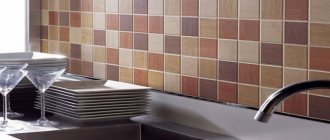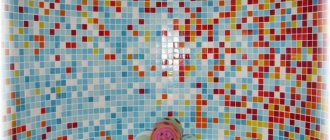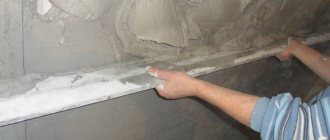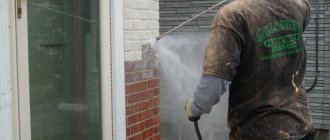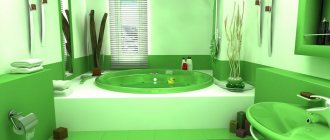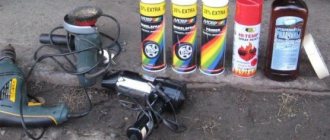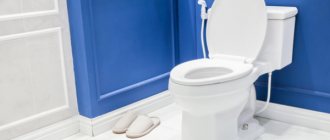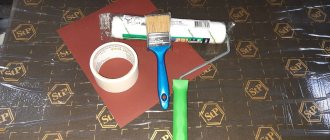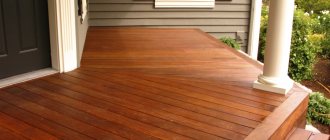Painting is an easy and inexpensive way to update your kitchen. If you've never painted before, it can seem like an overwhelming task, especially when it comes to choosing a color and finish to paint your kitchen walls.
Painting a kitchen where the walls are exposed to dirt and moisture requires the use of appropriate paints. What paints to choose for painting the walls in the kitchen? How to paint a kitchen? Here's everything you need to know about kitchen renovations and wall renovations.
Classification of paints
Depending on the main components in the composition of paints, they are divided into three structural features:
- Binding component. It affects the level of adhesion of the material to the wall surface;
- By media type. The substance affects the level of smoothness of the coating, as well as the viscosity of the resulting mixture.
Coloring agents are also classified according to the type of pigment. It affects the intensity of painting, as well as the speed of drying of the material. If you focus on the type of coating, the paints can be matte or glossy.
Kitchen paint options
Preparatory work
Acrylic, acrylate, or latex paint for the kitchen will help hide minor defects on the base; which one you choose does not matter, since the compositions have a high level of hiding power. In other cases, before painting the kitchen, the walls are prepared: applying plaster, puttying, sanding. To reinforce them, gossamer (fiberglass) is glued onto the putty at the start. When the glue on the web dries, the surface is leveled with finishing putty. After this it is polished.
Under a glossy or semi-gloss finish, the wall is leveled as much as possible. Otherwise, minor defects will be visible.
To obtain a uniform coating, the walls are primed. An appropriate primer composition is purchased for the KM type. Thanks to it, the absorbency of the base is leveled, the consumption of the dye is reduced, and the tenacity with it increases. Even textured walls, for example, with brickwork, are primed.
Which paint is suitable for the kitchen and why
What paint to paint the walls in the kitchen is a common question for many homeowners. For finishing, different types of products are used depending on their composition, durability, and color intensity. Epoxy, water-dispersed, and alkyd products are used in the kitchen interior.
Water dispersion paints
This is a paint and varnish material that is made on the basis of polymers. The products are characterized by increased fire resistance, density, and smooth surface. This is due to the fact that when coating, the paint is diluted with plain water, and not with specialized organic solutions.
Among the main elements in the composition of a paint and varnish product are synthetic fillers, pigments, and film formers.
Water-dispersed products on the surface
Choosing washable paint
Washable paint and varnish products are an excellent option for kitchens located on the ground floors, where dust usually penetrates in the summer when windows are often opened. These paints contain special protective components that improve the durability of the coating and make it resistant to mechanical damage and high humidity. The building material dries quickly and is considered completely safe for human health.
Alkyd paints
A universal product that can be used for cladding interior and exterior surfaces at home. This paint is easy to clean with chemicals and does not deteriorate when exposed to high temperatures or high humidity. The material is based on alkyd resin, which is characterized by increased strength and wear resistance. Alkyd paints and varnishes are easy to apply to any surface, dry quickly, and retain their shade for a long time.
Epoxy
Epoxy paints for walls in the kitchen in an apartment are waterproof paints and varnishes, which contain a predominant composition of epoxy resin. The building material has a long service life, easy application, and quick drying. The paint has increased frost resistance, can withstand temperature changes and high humidity. A surface painted with epoxy products can be washed with chemicals without worrying about the preservation of its color and texture.
Acrylic
Acrylic paints are resistant to high humidity, environmentally friendly, and easy to process. They are easy to apply, dry quickly, and give an intense shade when applied in one layer. Acrylic coating does not emit an unpleasant odor or emit toxic fumes. Acrylic paints can be used on uneven and rough surfaces; they will paint the space well and visually smooth out unevenness.
Silicone
These products are made on the basis of silicone resins. The paint is dissolved with water, and not with special chemicals. Therefore, it is safe for human health. The material does not have an unpleasant pungent odor, it is easily applied to the surface, and is well distributed over uneven walls. It contains minerals that allow the paint to firmly adhere to the surface. As a result, it forms a strong and durable layer that has a high level of reliability.
Silicone wall paint
Water-based
Painting the walls in the kitchen with textured water-based paint implies easy surface treatment, quick drying, and good distribution of the material along the walls. These products do not have a pronounced unpleasant odor, they are hypoallergenic and safe for humans.
The paint is water-soluble, so when applied to the walls there is no release of aggressive toxic substances. It can be used on various types of surfaces: wood, stone, MDF. The coating is easy to clean with water.
Algorithm for applying CM
The order of application of different types of CM is dictated by the type of binder, base, and depends on the effect expected after painting. But for everyone there is a general algorithm for covering the base:
- All decorative elements (plinths, door frames) are removed from the room.
- Interior items that remain in the room are covered with film. The floor, windows, and apron are also protected from accidental drops of paint.
- The work uses a painting tool: a brush or roller. A nylon or polyester brush is needed for applying water-based and water-dispersed dyes. A brush with natural bristles is used when working with alkyd. There are no traces left of her. A roller with a velor roller is purchased to cover smooth surfaces; the pile is chosen to be short. With a medium one it is convenient to paint a textured wall, with a long one – a rough base. It is not recommended to use a sponge roller in the kitchen. For corners, jambs, space near the frame, around the battery, use a 50 mm wide brush.
- The decorative coating is carried out in two or three layers. The drying time for each layer is indicated by the manufacturer on the container. After one layer has dried, the next one is applied.
- Since the covering layer of the alkyd composition is dense, it is applied with some peculiarities. The first layer is “retouching”, it is better to work with a brush. The second layer is created evenly with a roller.
Advice: readiness for use occurs differently for each species. The time for complete polymerization is indicated in the instructions for the CM and can occur after 30 days. Therefore, there is no need to test the coating immediately after painting.
Wall color in the kitchen: selection rules and recommendations
The choice of colors depends on the interior and kitchen design. Also, when selecting shades, it is necessary to take into account the area of the room in square meters, the features of the furniture (kitchen set, table), and accessories. The smaller the kitchen area, the lighter colors should be present in the interior.
Color palette for walls
Solid colors
A kitchen in a single color is a good idea for a small space. Minimalism visually enlarges the space, makes the room brighter and more beautiful. This color scheme can be used in modern and classic design trends: Provence, hi-tech, minimalism.
Bright shades
Bright shades are suitable for spacious kitchens with an area of 15 square meters. m. A combination of contrasting shades can visually narrow the kitchen space. Therefore, it is better not to use such a color scheme in a small area.
Multiple colors
The combination of several colors is used in many design styles: loft, Provence, classic, art deco. This is one of the most versatile options when decorating a kitchen area.
Ornaments and stencils
The abundance of ornaments is a distinctive feature of such trends as loft and ethno-style. Catchy details are also most often added in kitchens with a large area. In small rooms they will create a cramped effect.
Kitchen design with ornaments
Useful recommendations from experts
The choice of paint for the kitchen should be based not only on personal beliefs, but also on the preferences of all family members. After all, it is in the kitchen that family lunches, breakfasts and dinners take place. And the atmosphere of family communication can largely depend on the color of the walls.
- It's worth considering price because it matters. A cheap company will definitely be worse in some respect.
- It is necessary to determine the type of coverage. It can be gloss, semi-gloss or matte. The gloss is very shiny, difficult to clean and all the irregularities are visible on it.
- The color of the paint may be lighter or darker than indicated on the can; this should be taken care of in advance. For an additional fee, the manufacturer can custom mix the desired shade for you in the required volume.
- Paints must be selected from the same batch so that the shade does not differ.
- You need to choose the right roller and brushes. They should not leave bubbles or hairs.
- You also need to calculate the correct amount of paint, the store will help you with this.
How to paint walls in the kitchen - painting technology
The order of painting the walls looks like this:
- Dilute the paint and apply it to a brush or roller.
- Cover the corners with mortar first.
- Start painting the surface from the ceiling to the floor.
It is recommended to wet the brush halfway in the paint so that it does not drip. If a second coat is required, you need to wait until the first one is completely dry.
During the first few days, painted walls should not be touched with hands or washed with chemicals.
Painting walls at home
Kitchen painting is the optimal solution for any interior and design. Walls and ceilings treated with modern paints retain their color for a long time. Paints and varnishes are characterized by increased fire resistance, water resistance, and resistance to temperature changes. They retain their strength for 5-15 years. This is much longer than the lifespan of wallpaper.
Immediately before painting
All professionals pay great attention to preparatory work.
So, before you dip your roller into the paint tray and get started, make sure that:
- the surface of the walls is prepared, clean and sufficiently dry;
- you have glued the baseboards, cornices, window slopes, switches, etc. with mounting tape;
- covered the floor, doors and furniture with construction film;
- if the matter drags on until the evening, make sure there is sufficient artificial lighting;
- prepared brushes, rollers, a tray, a stepladder, and a large damp rag;
- dilute the paint in the required proportion and volume (for the first layer).
Tip: before use, it is advisable to rinse new brushes and rollers in warm water and wipe until barely damp. This will wash away factory debris and unnecessary particles.
If everything is OK, let's get started.

